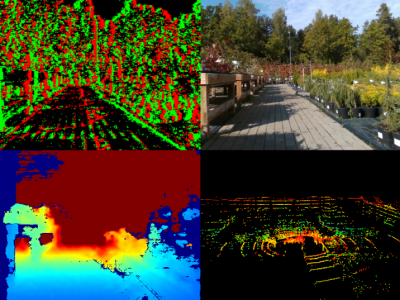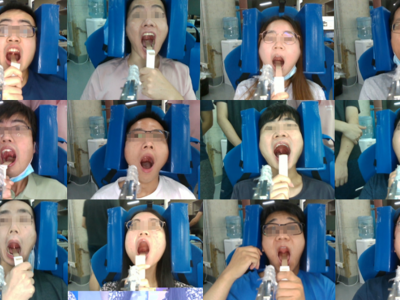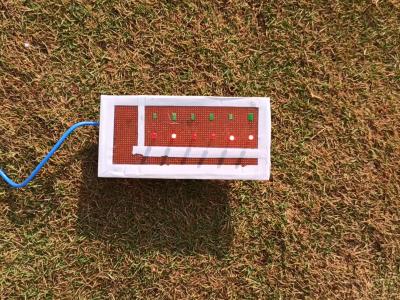Computer Vision
A new generation of computer vision, namely event-based or neuromorphic vision, provides a new paradigm for capturing visual data and the way such data is processed. Event-based vision is a state-of-art technology of robot vision. It is particularly promising for use in both mobile robots and drones for visual navigation tasks. Due to a highly novel type of visual sensors used in event-based vision, only a few datasets aimed at visual navigation tasks are publicly available.
- Categories:
 1319 Views
1319 Views
The concept of tuberculosis detection paves a major role in this recent world because, according to the Global Tuberculosis (TB) Report in 2019, more than one million cases are reported per year in India. Even though various tests are available, the chest X-ray is the most important one, without which the detection will be incomplete. In ancient poster anterior chest radiographs, several clinical and diagnostic functions are built by the use of computationally designed algorithms.
- Categories:
 258 Views
258 ViewsETFP (Eye-Tracking and Fixation Points) consists of two eye-tracking datasets: EToCVD (Eye-Tracking of Colour Vision Deficiencies) and ETTO (Eye-Tracking Through Objects). The former is a collection of images, their corresponding eye-movement coordinates and the fixation point maps, obtained by involving two cohorts, respectively, people with and without CVD (Colour Vision Deficiencies). The latter collects images with just one object laying on a homogeneous background, the corresponding eye-movement coordinates and fixation point maps gathered during eye-tracking sessions.
- Categories:
 1497 Views
1497 Views
SDU-Haier-AQD (Shandong University-Haier-Appearance Quality Detection) is an image dataset jointly constructed by Shandong University and Haier, which contains a various of air conditioner external unit image collected during actual detection process.The Appearance Quality Detection (AQD) dataset is consisted of 10449 images, and the samples in the dataset are collected on the actual industrial production line of air conditioner.
- Categories:
 511 Views
511 ViewsThe MCData was designed and produced for mouth cavity detection and segmentation. This dataset can be utilized for training and testing of mouth cavity instance segmentation networks. This dataset is the first available dataset for detecting and segmentation of mouth cavity main components to the best of the authors’ knowledge.
- Categories:
 772 Views
772 ViewsWe have developed this dataset for the Bangla image caption. Here, we have recorded 500 images with one caption of each. Basically the lifestyle, festivals are mainly focused in this dataset. We have accomplished rice/harvest festivals, snake charming, palanquin, merry-go-round, slum, blacksmith, potter, fisherman, tat shilpo, jamdani, shutki chash, date juice, hal chash, tokai, pohela falgun, gaye holud, etc.
- Categories:
 1802 Views
1802 ViewsLiDAR point cloud data serves as an machine vision alternative other than image. Its advantages when compared to image and video includes depth estimation and distance measruement. Low-density LiDAR point cloud data can be used to achieve navigation, obstacle detection and obstacle avoidance for mobile robots. autonomous vehicle and drones. In this metadata, we scanned over 1200 objects and classified it into 4 groups of object namely, human, cars, motorcyclist.
- Categories:
 904 Views
904 ViewsThis dataset was used in our work "See-through a Vehicle: Augmenting Road Safety Information using Visual Perception and Camera Communication in Vehicles" published in the IEEE Transactions on Vehicular Technology (TVT). In this work, we present the design, implementation and evaluation of non-line-of-sight (NLOS) perception to achieve a virtual see-through functionality for road vehicles.
- Categories:
 453 Views
453 Views
Dataset asscociated with a paper in Computer Vision and Pattern Recognition (CVPR)
"Object classification from randomized EEG trials"
If you use this code or data, please cite the above paper.
- Categories:
 2302 Views
2302 ViewsThe LEDNet dataset consists of image data of a field area that are captured from a mobile phone camera.
Images in the dataset contain the information of an area where a PCB board is placed, containing 6 LEDs. Each state of the LEDs on the PCB board represents a binary number, with the ON state corresponding to binary 1 and the OFF state corresponding to binary 0. All the LEDs placed in sequence represent a binary sequence or encoding of an analog value.
- Categories:
 713 Views
713 Views





